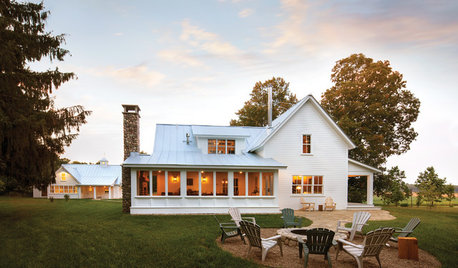DED resistant American Elms
joeschmoe80
11 years ago
Related Stories

MODERN HOMESHouzz Tour: A Palm Springs Midcentury Home With Central American Flair
A couple’s desert oasis home takes its style cues and color inspiration from Guatemala
Full Story
GARDENING GUIDESTree Care: Common Tree Diseases and What to Do About Them
Learn to recognize trees that may be affected by diseases or pests so you can quickly take action
Full Story
FALL GARDENING6 Trees You'll Fall For
Don’t put down that spade! Autumn is the perfect time for planting these trees
Full Story
DECORATING GUIDES10 Reasons to Try a Moroccan Rug
Unbelievably plush and durable, these carpets are a design obsession with good cause
Full Story
DECORATING GUIDESHouzz Tour: Arts and Crafts Cottage Gets a Lively Remake
An interior designer uses color, light and historical touches to brighten up a 1920s Sydney home
Full Story
KITCHEN DESIGNKitchen of the Week: Chestnut and an Open Fire in Connecticut
Antique chestnut boards give a kitchen with a wood-burning oven vintage flair, balancing its modern amenities
Full Story
You Said It: ‘Jump in a Lake’ and Other Houzz Quotables
Design advice, inspiration and observations that struck a chord this week
Full Story
ARBOR DAY8 Reasons to Plant a Great Tree
Beauty is its own reward, but the benefits of planting the right tree in the right place go way beyond looks
Full Story
DECORATING GUIDES7 Home Purchases Worth the Splurge
Make buyer's remorse over furniture, textiles and more a thing of the past with this wise purchasing advice
Full Story
REMODELING GUIDESWhen to Use Engineered Wood Floors
See why an engineered wood floor could be your best choice (and no one will know but you)
Full Story







bengz6westmd
joeschmoe80Original Author
Related Professionals
Canton Landscape Architects & Landscape Designers · Windham Landscape Architects & Landscape Designers · West Milford Landscape Architects & Landscape Designers · Cincinnati Landscape Contractors · Huntington Landscape Contractors · Riverview Landscape Contractors · Siloam Springs Landscape Contractors · Tuscaloosa Landscape Contractors · Five Forks Siding & Exteriors · Orland Park Siding & Exteriors · South Windsor Siding & Exteriors · Chandler Decks, Patios & Outdoor Enclosures · Lancaster Decks, Patios & Outdoor Enclosures · Lenoir Decks, Patios & Outdoor Enclosures · Lincoln Decks, Patios & Outdoor Enclosuresalexander3_gw
bengz6westmd
Ruffles78
wisconsitom
bengz6westmd
Ruffles78
jocelynpei
Dufusyte
spruceman
hairmetal4ever
bengz6westmd